Mumbai, the city of dreams, is known for its vibrant and diverse culture, its bustling and lively streets, and its iconic landmarks that attract millions of visitors every year. One of the most popular and prestigious landmarks of Mumbai is the Haji Ali Dargah, a mosque and a mausoleum of Pir Haji Ali Shah Bukhari, a Sufi saint and a wealthy merchant from Uzbekistan. Visit during Mumbai One day Tour By cab
The Haji Ali Dargah is located on an islet off the coast of Worli in the southern Mumbai, and is an exquisite example of Indo-Islamic architecture, associated with legends about doomed lovers. The dargah is one of the most recognizable symbols of Mumbai, and a place of spiritual and cultural significance for people of all religions and backgrounds.
Table of Contents
Historical Background of Haji Ali Dargah

The Haji Ali Dargah was constructed in 1431 in memory of Pir Haji Ali Shah Bukhari, who gave up all his worldly possessions before making a pilgrimage to Mecca. Hailing from Bukhara, in present-day Uzbekistan, Bukhari travelled around the world in the early to mid 15th century, and eventually settled in present-day Mumbai. According to legends surrounding his life, once the saint saw a poor woman crying on the road, holding an empty vessel.
He asked her what the problem was, she sobbed that her husband would thrash her as she stumbled and accidentally spilled the oil she was carrying. He asked her to take him to the spot where she spilt the oil. There, he jabbed a finger into the soil and the oil gushed out. The overjoyed woman filled up the vessel and went home.
Later, Pir Haji Ali Shah Bukhari had a recurring and disturbing dream that he had injured Earth by his act. Full of remorse and grief from that day he started keeping unwell. Then with the permission of his mother, he traveled to India with his brother and finally reached the shore of Mumbai – near Worli or at some place opposite the present tomb.
His brother went back to their native place. Pir Haji Ali Shah Bukhari sent a letter with him to their mother informing her that he was keeping good health and that he had decided to reside at that place permanently for the spread of Islam and that she should forgive him. Until his death he kept spreading knowledge about Islam to the people and his devotees would regularly visit him.
Before his death he advised his followers that they should not bury him at any proper place or graveyard and should drop his shroud (‘kafan’) in the ocean such that it should be buried by the people where it is found. His wish was obeyed by his followers. That is why the dargah is built at the very site where his shroud came to rest in the middle of the sea where it perched on a small mound of rocks rising above the sea.
The structure was given its present day shape in the early 19th century after the Trust was legally formed as an entity in 1916. The dargah reflects the architectural style and design of its time, with white domes and minarets reminiscent of the Mughal era. The dargah also reflects the cultural and historical context of Mumbai, as it has witnessed many events and changes over the centuries.
Significance in Islam of Haji Ali Dargah

The Haji Ali Dargah is a symbol of Islamic spirituality and devotion, as it houses the tomb of Pir Haji Ali Shah Bukhari, a revered Sufi saint who dedicated his life to spreading Islam and serving humanity. The dargah is also connected to the legend of Haji Ali, who is believed to have miraculous powers and who fulfills the wishes of his devotees.
The legend goes that once Haji Ali was travelling in a ship with some merchants when a storm hit them. The ship started sinking and everyone panicked. Haji Ali prayed to Allah to save them and vowed that if they survived, he would walk on water to Mecca. Miraculously, the storm subsided and they reached the shore safely. Haji Ali then kept his vow and walked on water towards Mecca. However, when he reached halfway, he realized that he had forgotten to take his mother’s permission for this journey. He felt guilty and turned back to seek her forgiveness. But as soon as he turned back, he drowned in the water and died.
Architectural Splendor of Haji Ali Dargah

The Haji Ali Dargah sports Indo-Islamic architecture from the Mughal period. This is evident in the set of minarets and domes that fill the area. The main gate which welcomes everyone is fortified with reinforced concrete cement. On the outside, it has a smooth layer of marble which makes it gleam from afar, especially in the afternoon. On Islamic festivals, this gate is lit up in green to signify purity.
The dargah complex consists of a mosque, a tomb, a courtyard, and a sanatorium. The mosque has a large prayer hall with intricate patterns and designs on the walls and ceilings. The tomb is located in the center of the complex, surrounded by a silver frame and covered by a red and green cloth. The tomb is visited by thousands of devotees who offer flowers, incense, and prayers to the saint. The courtyard has two tanks that store water from the Arabian Sea. The water is considered holy and is used for ablutions and drinking by the pilgrims. The sanatorium is a place where the poor and needy are provided with food and shelter.
The most iconic feature of the dargah is the narrow causeway that connects it to the mainland. The causeway is about 500 meters long and is accessible only during low tide. During high tide, the causeway gets submerged in water and the dargah appears to be floating on the sea. The walk on the causeway is an exhilarating experience for many visitors, as they enjoy the breeze and the views of the sea and the city skyline.
Spiritual Experience at Haji Ali Dargah

The Haji Ali Dargah is not only a place of worship but also a place of spiritual experience for many people who visit it. The dargah is considered to be a pilgrimage site for Muslims, as it is one of the most revered shrines of Sufism in India. Sufism is a mystical branch of Islam that emphasizes love, compassion, and union with God. The dargah attracts people from all walks of life who seek blessings, guidance, and peace from the saint.
The ambiance and atmosphere of the dargah are serene and soothing, despite the crowds and noise. The sound of the Quranic recitations, the aroma of the incense, and the sight of the white domes create a sense of awe and reverence among the visitors. Many people feel a connection with the divine and experience a sense of calmness and joy at the dargah.
The dargah also has an impact on visitors and their spiritual journeys. Many people claim to have their wishes fulfilled or their problems solved after visiting the dargah. Some people also report having miraculous healings or visions at the dargah. Some people even attribute their conversions to Islam to their visit to the dargah. The dargah inspires many people to follow the path of Sufism and to practice love, tolerance, and service to humanity.
Cultural Significance of Haji Ali Dargah
The Haji Ali Dargah is not only a religious site but also a cultural site that reflects the multi-cultural roots of Mumbai. It is open to all people irrespective of their faith, and attracts people from different backgrounds and walks of life. It is a place of communal harmony and tolerance, where people respect and appreciate each other’s beliefs and traditions.
The dargah is also influenced by Sufism, a mystical branch of Islam that emphasizes love, compassion, and union with God. Sufism has a rich and diverse heritage in India, and has contributed to the development of literature, music, art, and culture. The dargah hosts various cultural events and festivals that celebrate Sufism and its teachings. Some of these events are:
- Urs: The Urs (Death Anniversary) of Pir Haji Ali Shah Bukhari is on the 16th of Rabi-ul-Aakhir (17th Shab). The Trust performs all necessary rituals as per Islamic traditions and distributes food and sweets to all devotees, visitors and fakirs. A special program of Milad and prayers is held on the 16th of every Islamic Month after Namaaz-e-Isha (17th Shab) in remembrance of the Urs of Pir Haji Ali Shah Bukhari.
- Eid-E-Milad-un-Nabi: In celebration of Eid-E-Milad-un-Nabi – 12th Rabi-al Awal (Birth Anniversary of Prophet Mohammad), the Trust organizes a function for viewing the sacred relics of Prophet Mohammad after Namaaz-e-Zuhr. Prayers are recited (Fateha) at sunset (Maghrib) and food is distributed.
- Qawwali: Qawwali is a form of devotional music that originated in Sufism. It is performed by singers who praise God, the Prophet, and the saints through poetry and music. The dargah hosts qawwali sessions on Thursdays and Fridays, where visitors can enjoy the soulful and mesmerizing performances by renowned qawwals.
- Sama: Sama is a spiritual practice that involves listening to music, singing, dancing, or whirling as a way of reaching a state of ecstasy and connection with God. The dargah organizes sama sessions on special occasions, where visitors can witness the mystical dance of the whirling dervishes, who are followers of Rumi, a famous Sufi poet and mystic.
Haji Ali Dargah in Literature and Art
The Haji Ali Dargah has also inspired many writers and artists to create works that depict its beauty and significance. Some examples are:
- Literature: The dargah has been mentioned or featured in several literary works, such as Salman Rushdie’s novel The Moor’s Last Sigh, Amitav Ghosh’s novel The Hungry Tide, Rohinton Mistry’s novel Family Matters, Vikram Chandra’s novel Sacred Games, Jeet Thayil’s novel Narcopolis, and Anjum Hasan’s short story The Big Picture.
- Paintings: The dargah has been painted by many artists who have captured its charm and splendor. Some notable paintings are by M.F. Husain, Raja Ravi Varma, Jehangir Sabavala, Sudhir Patwardhan, Atul Dodiya, Anjolie Ela Menon, and Arpana Caur.
- Films: The dargah has also appeared in several films, such as Fiza, Black Friday, Kurbaan
Preservation and Conservation of Haji Ali Dargah
The Haji Ali Dargah is a heritage site that requires constant preservation and conservation to maintain its beauty and integrity. The dargah faces many challenges due to its location and exposure to natural and human factors. Some of these challenges are:
- Erosion: The dargah is situated on an islet that is constantly eroded by the waves and tides of the Arabian Sea. The salt water also corrodes the structure and weakens its foundation. The dargah needs regular repairs and reinforcements to prevent further damage and collapse.
- Pollution: The dargah is surrounded by polluted water that contains sewage, garbage, and industrial waste. The pollution affects the marine life and the environment around the dargah. It also poses a health risk to the visitors and the staff of the dargah. The dargah needs proper waste management and sanitation facilities to keep the water clean and safe.
- Crowding: The dargah attracts millions of visitors every year, especially during festivals and special occasions. The large crowds create congestion and chaos on the narrow causeway and inside the complex. The crowding also puts pressure on the infrastructure and resources of the dargah. The dargah needs better crowd management and security measures to ensure smooth and safe access for all visitors.
The Haji Ali Dargah Trust, which is the legal owner and caretaker of the dargah, has taken several efforts to preserve and protect the dargah from these challenges. Some of these efforts are:
- Restoration: The Trust has undertaken several restoration projects to repair and renovate the structure of the dargah. In 2008, the Trust spent Rs. 2 crore to restore the main dome, minarets, entrance gate, courtyard, and sanatorium of the dargah. In 2016, the Trust spent Rs. 10 crore to restore the tomb chamber, prayer hall, tanks, and causeway of the dargah. The restoration work was done by experts using traditional materials and techniques.
- Beautification: The Trust has also beautified the dargah by adding aesthetic elements such as lights, fountains, gardens, and paintings. The Trust has installed LED lights on the dome, minarets, gate, and causeway of the dargah, which illuminate it in different colors at night. The Trust has also installed fountains in the courtyard and tanks of the dargah, which create a soothing effect. The Trust has also planted gardens around the complex, which add greenery and freshness. The Trust has also commissioned paintings on the walls and ceilings of the dargah, which depict scenes from Islamic history and culture.
- Awareness: The Trust has also created awareness among the visitors and the public about the importance and significance of the dargah. The Trust has put up signboards and banners that inform visitors about the history, architecture, legends, rituals, etiquette, and events of the dargah. The Trust has also organized seminars, workshops, exhibitions, competitions, and campaigns that educate people about Sufism, Islam, peace, harmony, environment, and social issues.
FAQ’s
How far is Haji Ali Dargah from Mumbai?
Haji Ali Dargah is located on an islet off the coast of Worli in the southern Mumbai. It is about 6 km from the city center and 20 km from the airport. It can be reached by road or by boat during low tide.
What is the story of Haji Ali Dargah Mumbai?
Haji Ali Dargah is the tomb of Pir Haji Ali Shah Bukhari, a Sufi saint and a wealthy merchant from Uzbekistan. He gave up all his worldly possessions and made a pilgrimage to Mecca. On his way back, he settled in Mumbai and spread Islam among the people. Before his death, he instructed his followers to drop his shroud in the sea and bury him where it landed. His shroud came to rest on a small mound of rocks in the middle of the sea, where the dargah was built.
How much does Haji Ali Dargah cost?
There is no entry fee to visit Haji Ali Dargah. However, visitors are expected to make donations to the Trust that manages the dargah. The donations are used for the maintenance and welfare of the dargah and its staff.
Is Haji Ali open today in Mumbai?
Haji Ali Dargah is open every day from 5:30 a.m. to 10:00 p.m. However, the access to the dargah depends on the tide timings. The dargah can be reached by a narrow causeway only during low tide. During high tide, the causeway gets submerged and the dargah appears to be floating on the sea.
Can girls visit Haji Ali?
Yes, girls can visit Haji Ali Dargah. In 2016, the Supreme Court of India lifted a ban that prevented women from entering the inner sanctum of the dargah. Since then, women are allowed to enter and pray at the tomb of Pir Haji Ali Shah Bukhari along with men.
Can non Muslims visit Haji Ali?
Yes, non Muslims can visit Haji Ali Dargah. The dargah is open to people of all faiths and backgrounds. However, visitors are expected to respect the Islamic traditions and etiquette of the dargah. They should dress modestly, cover their heads, remove their shoes, and avoid alcohol and smoking.
What is the right time to visit Haji Ali Dargah?
The right time to visit Haji Ali Dargah depends on one’s preference and convenience. Some people prefer to visit during sunrise or sunset to witness the scenic views of the sea and the city skyline. Some people prefer to visit during festivals or special occasions such as Urs (death anniversary of Pir Haji Ali Shah Bukhari), Eid-E-Milad-un-Nabi (birth anniversary of Prophet Muhammad), or Qawwali (devotional music) sessions to experience the spiritual atmosphere and cultural events of the dargah. However, one should always check the tide timings before planning a visit as they affect the accessibility of the dargah.
What is Haji Ali famous for?
Haji Ali Dargah is famous for its Indo-Islamic architecture, its location on an islet in the sea, its legends about doomed lovers, its tomb of Pir Haji Ali Shah Bukhari, its mosque and prayer hall, its courtyard and tanks, its causeway and lights, its fountains and gardens, its paintings and relics, its Sufi music and dance, its festivals and events, and its miracles and blessings.
What should I wear to Haji Ali Dargah?
Visitors should wear modest and respectful clothing to Haji Ali Dargah. They should avoid wearing shorts, skirts, sleeveless tops, or any revealing or tight-fitting clothes. They should also cover their heads with a scarf or a cap. Men should wear trousers or jeans with a shirt or a kurta. Women should wear salwar kameez or saree with a dupatta or a burqa.
Conclusion:
Haji Ali Dargah is a remarkable monument that showcases the rich and diverse heritage of Mumbai. It is a place of worship, a place of culture, and a place of wonder. It is a testament to the faith and devotion of Pir Haji Ali Shah Bukhari, who dedicated his life to spreading Islam and serving humanity. It is also a symbol of harmony and tolerance, where people of all religions and backgrounds come together to seek blessings and peace.
Visiting Haji Ali Dargah was a memorable and enlightening experience for me. I was amazed by the beauty and grandeur of the structure, the serenity and spirituality of the atmosphere, and the history and legends of the saint. I was also impressed by the efforts of the Trust to preserve and protect the dargah from various challenges. I felt a connection with the divine and a sense of gratitude and joy at the dargah.
I would highly recommend anyone who is interested in exploring Mumbai’s heritage and culture to visit Haji Ali Dargah. It is a unique and unforgettable destination that will leave you with awe and inspiration. Whether you are looking for information, entertainment, or enlightenment, you will find it at Haji Ali Dargah.



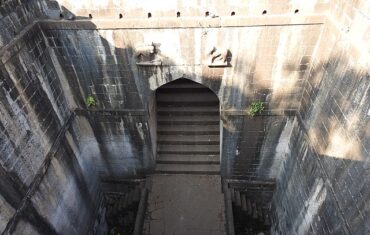
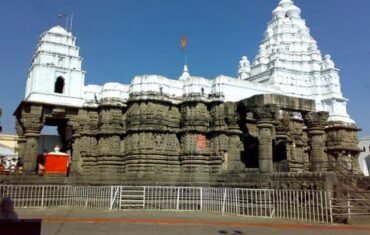

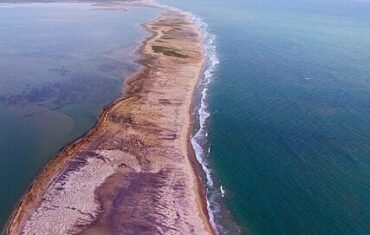
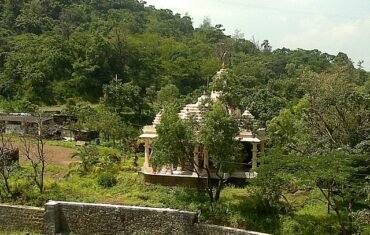
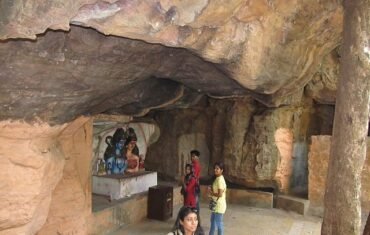



Comments are closed.